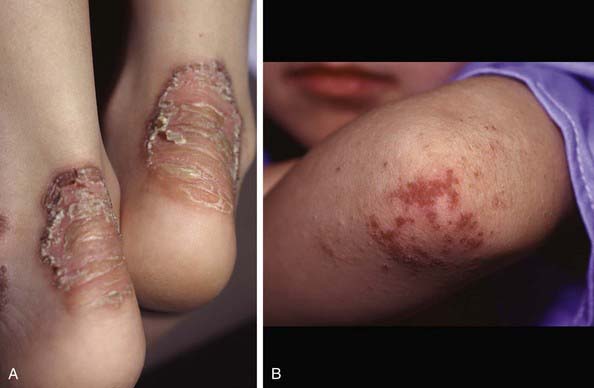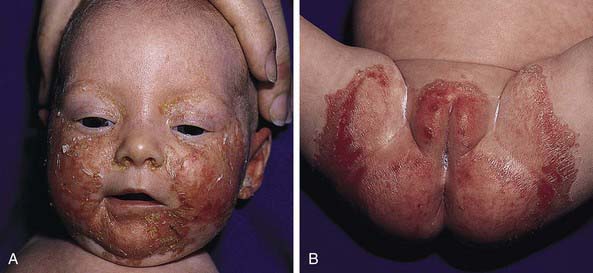Chapter 663 Nutritional Dermatoses
Acrodermatitis Enteropathica
Acrodermatitis enteropathica is a rare autosomal recessive disorder caused by an inability to absorb sufficient zinc from the diet. The genetic defect is in the intestinal zinc specific transporter gene SLC39A4. Initial signs and symptoms usually occur in the first few months of life, often after weaning from breast milk to cow’s milk. The cutaneous eruption consists of vesiculobullous, eczematous, dry, scaly, or psoriasiform skin lesions symmetrically distributed in the perioral, acral, and perineal areas (Fig. 663-1) and on the cheeks, knees, and elbows (Fig. 663-2). The hair often has a peculiar, reddish tint, and alopecia of some degree is characteristic. Ocular manifestations include photophobia, conjunctivitis, blepharitis, and corneal dystrophy detectable by slit-lamp examination. Associated manifestations include chronic diarrhea, stomatitis, glossitis, paronychia, nail dystrophy, growth retardation, irritability, delayed wound healing, intercurrent bacterial infections, and superinfection with Candida albicans. Lymphocyte function and free radical scavenging are impaired. Without treatment, the course is chronic and intermittent but often relentlessly progressive. When the disease is less severe, only growth retardation and delayed development may be apparent.

Figure 663-2 A, Psoriasiform lesion of zinc deficiency dermatitis on the ankles. B, Similar lesions on the elbows.
Stay updated, free articles. Join our Telegram channel

Full access? Get Clinical Tree



